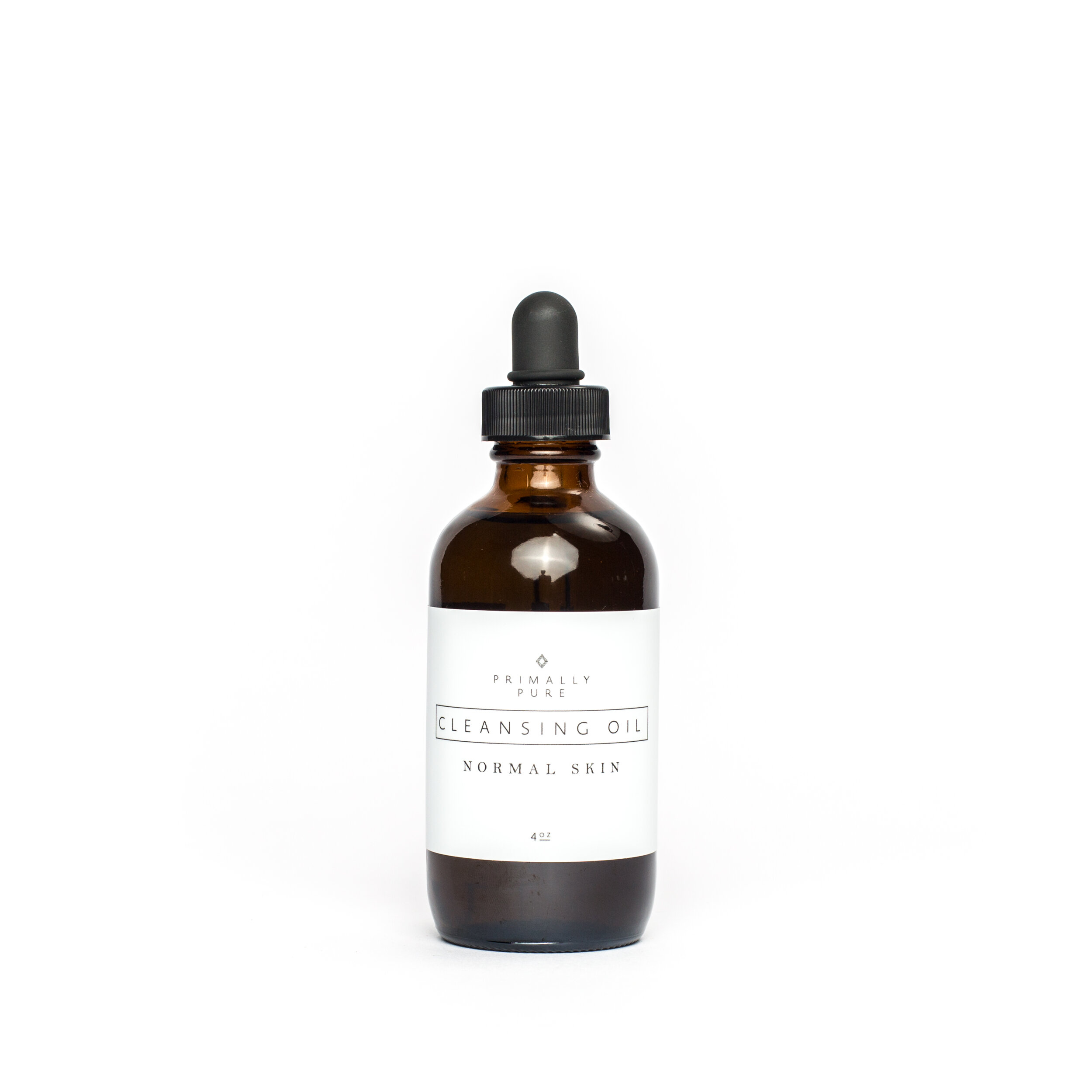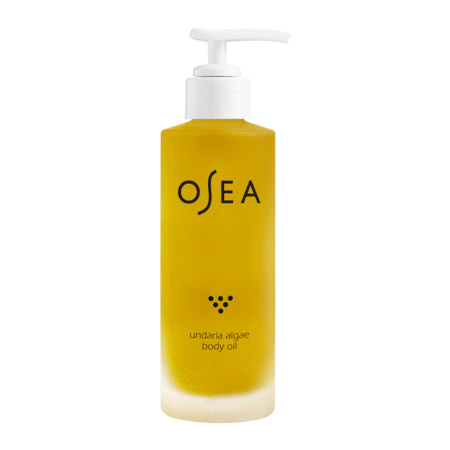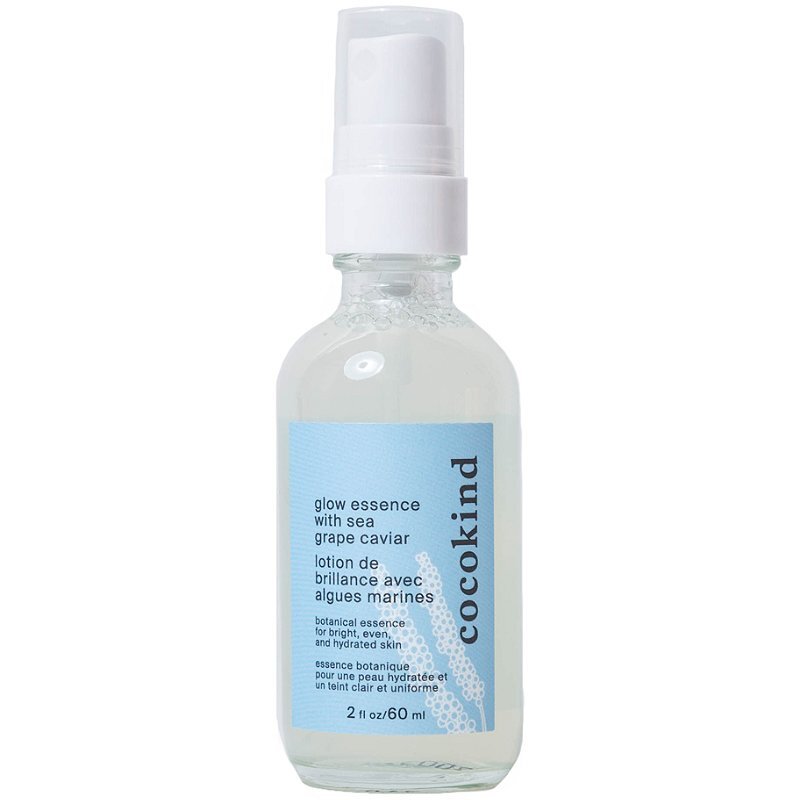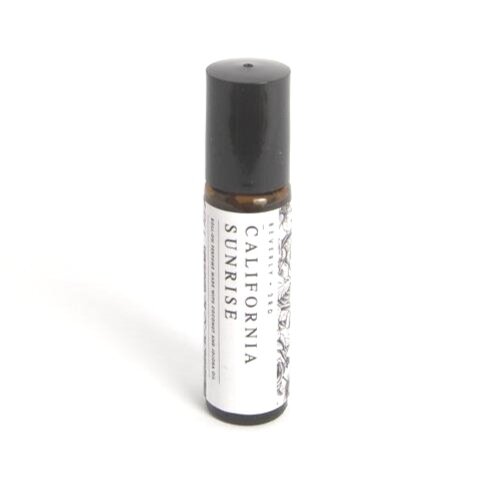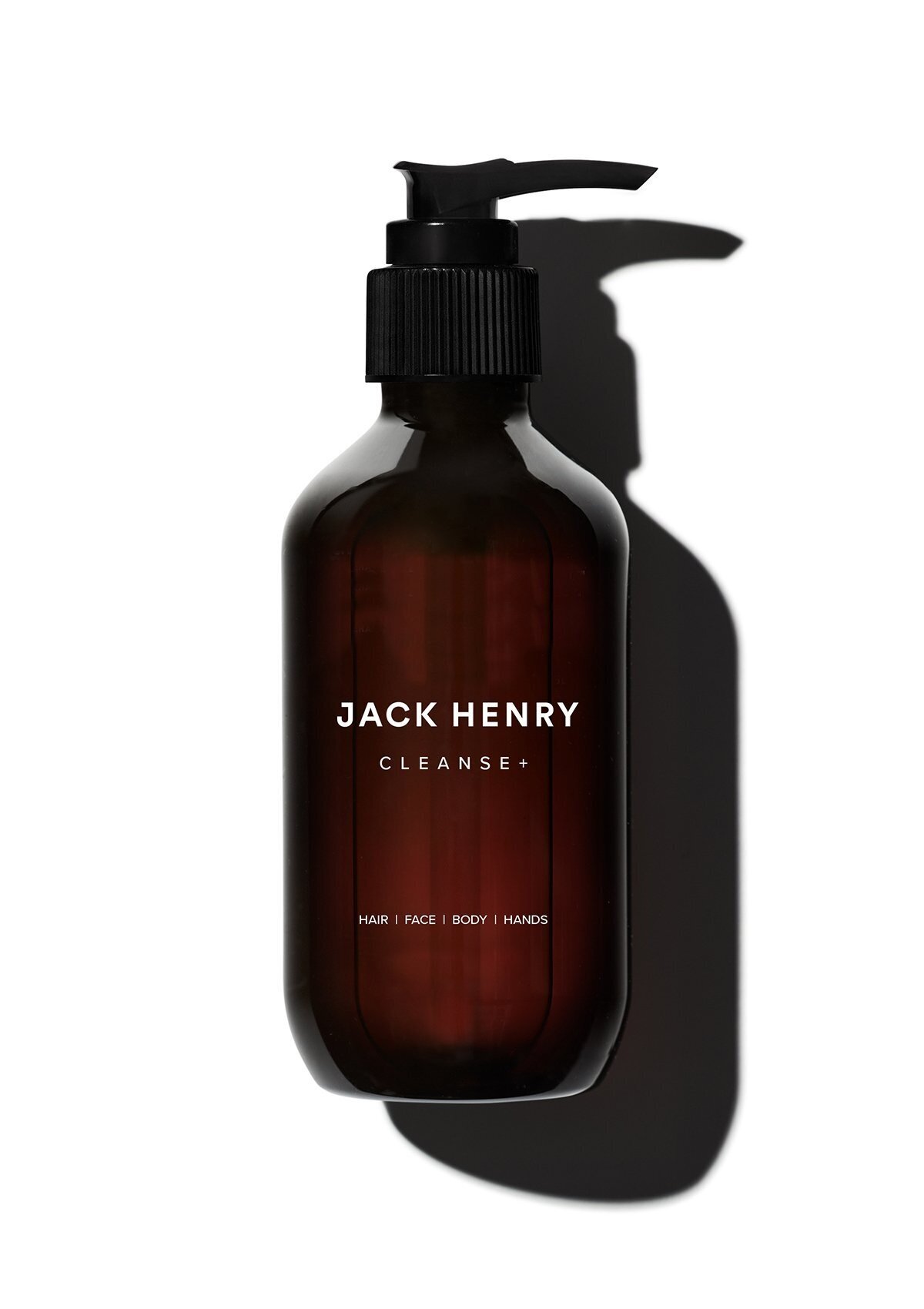Why Switch To Clean Beauty? Here's What You (Actually) Need To Know...
Clean skincare is something that I’ve mentioned maaaany times on The Foundation Blog and my instagram before, but with my doctorate finishing up (*pops bubbly*), I realized that for all the times I mention “nontoxic products” and “clean beauty” I’ve never really done a broad, comprehensive, research-backed blog post on why switching from toxic skincare products does matter for your health….
In this article, I’m going to…
Summarize an overview of the issue at hand
Share some concrete points, facts, and information on regulations that are relevant to the importance of seeking clean beauty products.
Discuss the how and why of switching to clean & nontoxic products, and
Finally, I’m going to share 8 of my absolute fave nontoxic brands for clean skincare, makeup, and even household products that will make “switching over” to clean products much more simple!
This is something I’m truly truuuuuuly passionate about for health, and I wanted to give an in-depth look at the importance of seeking clean products in allllllllll areas of life—but especially beauty and skincare. Okay, that enough of an intro— let’s jump into a DEEP dive into WHY it’s so important to make the switch to clean beauty and skincare products.
Wait… Toxins Can’t Be Allowed In My Products, Can They?
Now you may think that federal agencies prove safety before products are approved, used, and sold...but that’s often not the case. In fact, while the European Union has over 1400 banned chemicals in personal care products due to safety concerns (like being linked to neurological impacts, hormone-disrupting properties, or carcinogenic effects—yikes!), the United States has only banned 11 chemicals from personal care products (Faber, 2019). It is not that the EU far exceeds the rest of the world in this domain, it is that the US has fallen behind. The United States federal cosmetics law is severely outdated, having been put into place in 1938, and has not kept up with the changes to the industry and growing scientific knowledge (Faber, 2019).
What this means— there are many, many chemicals that have correlations with adverse health outcomes that are found in the products we use daily—makeup, shampoo, deodorant, toothpaste...the list goes on and on. Many countries ban these chemicals as a precautionary measure, but in the U.S., the FDA demands a much higher level of what’s known as “proof of harm” before any action is taken, allowing these chemicals to be present in products we use each and every day. In fact, U.S. law states that cosmetics manufacturers are not required by law to submit safety data to the FDA—and it’s been estimated that only 10% of the 10,500 chemicals in personal care products have been evaluated for safety (Goleman, 2010).
To summarize, the laws and regulations in the United States are way behind in terms of evaluating the safety of chemicals in products, resulting in Americans being routinely exposed to chemicals in the products we use every. single. day.
the issue: here’s the fulllll story
Exposures to environmental contaminants have been correlated with adverse health effects for the general population. However, the U.S. Environmental Protection Agency (EPA) has only published evaluation data for only 200 of the estimated 83,000 chemicals that Americans use (Wilson & Schwarzman, 2009). Many Americans are unaware that there are untested and potentially unsafe chemicals in their products (Vogel, 2011).
Individuals may use or come into contact with a wide variety of chemicals in personal care products every day. Contaminants can be inhaled, ingested, absorbed topically, and could also pass through the placenta or breast milk (Chan, Chalupka, & Barrett, 2015).
Current US law states that does not have the authority to require cosmetic manufacturers to submit their safety data to the FDA, and only outlaws 11 chemicals (Vogel, 2011). Opposingly, the EU’s approach is what as known as its REACH (Registration, Evaluation, Authorisation, and Restriction of Chemicals) laws which require manufacturers to prove the safety of each ingredient before it can be put in a product (Williams, Panko, & Paustenbach, 2009). Such a stark contrast, huh?
The US has similar rules for new chemicals, but this does not apply to the thousands of potentially dangerous chemicals that are already incorporated into products (Prohibited & Restricted Ingredients in Cosmetics, 2017). Furthermore, if a chemical is considered to be worrisome, the FDA regulatory system demands a high level of proof of harm before any action is taken (Faber, 2019). All of these lapses in legislation have led to the American public being routinely exposed to chemicals in personal care products.
Current US legislation does not limit as many chemicals in these products compared to other countries, and instead, places the responsibility on consumers to decipher complex chemical jargon on ingredient lists. However, only a fraction (3%) of college-aged students recognize personal care products as a mechanism of toxic exposure (Chan, Chalupka, & Barrett, 2015). This is worrisome as the Environmental Working Group has shown that the average woman is exposed to an average of 168 chemicals from daily use of cosmetics and personal care items alone (EWG, 2012). With rising concerns on cancer, hormone imbalances, and neurological diseases in America, it is important that we reduce toxic exposure.
to sum it up: the key facts & cliff notes version
Many chemicals that are in our daily personal care products (makeup, skincare, shampoo, deodorant, toothpaste, etc.) have correlations with toxic effects to the body (cancer, hormone issues, neurological issues, etc.)
Countries regulate personal care products in various ways, with many countries banning chemicals like formaldehyde, parabens, triclosan, and toluene (Faber, 2019). However, these chemicals are not banned in the United States and are allowed in personal care products that are used daily by many Americans.
Women who report higher levels of use of personal care products (such as makeup, sunscreen, skincare, etc.) had higher levels of certain phthalates, parabens, and other phenols in their urine compared to their counterparts who reported less frequent use of personal care products (Berger et al, 2019).
One class of these chemicals commonly found in US/Canadian makeup products are PFAS (per-and polyfluoroalkyl substances). This is a broad term used to define over 5000 chemicals which build up in our bodies (“bioaccumulate”) and have correlations with cancer, thyroid disease, liver toxicity, decreased fertility, and hormonal disruption. A recent study done by Whitehead & colleagues (2021), showed the presence of PFAS in in 52% of 231 randomly selected makeup products sold in the United States. (Yikes). Frighteningly, labels didn’t disclose this exposure. Of the hundreds of makeup items tested with PFAS, 88% of the products failed to disclose any ingredients that would explain those chemical markers on their label. (Double yikes)
The U.S. federal cosmetics law is severely outdated, having been put into place in 1938, and has not kept up with the industry and growing scientific knowledge (Faber, 2019).
In many other countries, chemicals will be banned after seeing only preliminary toxicity data following the “precautionary principle” in setting boundaries on the exposure to potentially hazardous substances. However, the FDA regulatory system of the United States demands a high level of proof of harm before any action is taken or a chemical would be removed from a product.
The European Union has banned more than 1,300 chemicals from personal health or cosmetic products for consumer safety, while the United States has only banned 11 chemicals (Faber, 2019).
Current US legislation does not limit as many chemicals in these products compared to other countries, and instead, places the responsibility on consumers to seek out nontoxic products. However, this is worrisome as a majority of Americans are unaware that their personal care products as a mechanism of toxic exposure (Chan, Chalupka, & Barrett, 2015)
With rising concerns on cancer, hormone imbalances, and neurological diseases in America, it is imperative that we look at the chemicals in our products.
To finish things off, I am including a policy brief below that I made on this topic for grad school on the topic. Feel free to pin it & share (but please give credit when appropriate!)
okay, Kate, this information is overwhelming and I feel helpless…
PHEW. That was heavy, but there IS some good news here. You don’t have to wait for legislation and companies to change because there are good options today, right now, waiting for you! Awareness of the toxins in products is the first step and choosing safer products can be your next.
Switching to nontoxic products can make a difference-- and quickly! I recently came across a study about the concept of avoidance of toxic products. Basically, this means that when you reduce your exposure to toxic chemicals, you lower your overall body burden of chemicals.
In a 2016 study, it was found that after only three days of using products without some common chemicals (phthalates, parabens, and triclosan), there was a significant reduction (between 27.4% and 44%, depending on the substance) in those chemicals being found in the body (Harley et al., 2016). That means that the levels of these chemicals drastically decreased within the body within only 3 days simply from reducing the exposure to them.
What this means is that many of the chemicals found in our products don’t necessarily accumulate and build up in our bodies, but we are often applying them day after day so they are continually introduced to the body like a constant stream. However, this study supports the notion that by intentionally reducing our contact and use of toxic products will allow the body to flush them out pretty effectively. This is great news! These chemicals have correlations with negative health impacts, and by switching our products we can drastically reduce our body’s load of these toxins in just a few days.
This just goes to show that swapping out our products has a BIG impact on our overall health and the chemical burden in our bodies— even within just a few days.
Below, I am going to walk you through HOW you can start to clean up your products and which companies you can trust.
making the switch the nontoxic products— 8 companies i use & trust:
It’s clear that even starting with one simple swap can have a BIG effect. When I first began making the switch to clean products, I simply did it one product at a time. If I ran out of something, I’d find a clean alternative to replace it with. This should be simple and approachable—there’s no need to overhaul your whole beauty cabinet in a day! Start small, make intentional switches, and slowly but surely— you’ll find yourself using products that fulfill their job and are good for you! If you’re looking to get started… (*drumroll pls*) here’s a list of some clean brands that I use AND trust.
Primally Pure. Okay, so at this point, you may think that Primally Pure is the only thing I use.. And you’d be mostly correct, ha! I will admit that primally pure truly does makeup about 90% of my clean skincare products and I could not recommend their products more highly. I am genuinely obsessed and use the products multiple times each day. From skincare to body care to gua sha and dry brushing, this is truly my one-stop-shop and by far my favorite clean skincare brand. If you’re looking for clean skincare, this is absolutely where I’d recommend that you start. It’s a small, women-owned business with insane quality and products that truly WORK. Not to mention, the ingredients of their products are by far the cleanest and most pure out of every company on this list.
If you want to get a holistic skincare plan that is customized to you and your unique skincare needs, I hiiiiighly recommend taking this quiz. It assesses your skin state and then recommends all-natural products specifically for your skin’s needs. (and psssst, I don’t know if I’m allowed to tell you this, but the quiz gives you a secret coupon and discount for all the products it recommends once you finish it). Okay, I gotta stop rambling, but if you are looking for a skincare brand you will LOVE and that is completely all-natural, look no further. Simple, pure, and SUCH high-quality skincare products. I couldn’t be a bigger fan. Save 10% on EVERYTHING with the code KATE10
OSEA Malibu. Okay, so while PP makes up 90% of what I use, what about that other 10%? :) This is where I play around and experiment with some other clean skincare companies! I LOVE trying new products and will supplement here and there with random finds. One of those companies that I love to experiment with is OSEA Malibu. This is another family-owned brand that I use and love, with products full of pure and beautiful ingredients. I use this brand typically for body care and some special skincare *extras* when I reaaalllllyy want to feel luxurious. Some of my faves include their body oil (omg, amazing), the exfoliating scrub (I use this 1-2x/week in the shower for mega soft skin), their face masks, the blemish balm moisturizer (great for acne-prone skin!), and their MUD. MASK. CLEANSER. I am sooooo obsessed with this specific cleanser, I use it about once a week for a beautiful, deeeeeep, peppermint-and-tea-tree-infused tingling clean feeling. I will use this when I am having extra breakouts and it is GAME-CHANGING. Again, this isn’t my “main” everyday skincare line, but I really like treating myself to a few of their products for the more of the “extra” skincare things (exfoliating, body oils, facial masks, etc.). They work great, their ingredients are beeeeaaautiful, and I’ve had a great experience with OSEA. :) Check ‘em out here! (COUPON: KATE10)
Cocokind. Cocokind is a fun brand that I’m newer to using! Again, I primarily use Primally Pure, but I think it’s fun to supplement and try a few “special” products from different brands. At this point I only use a few of their products but my experience has been so good that they deserve a spot on this list. They have a couple of great toners (I especially love their raspberry and apple cider vinegar toner for more acne-prone times of the month!) and I LOOOOOVE their turmeric spot treatment for deep breakouts and inflammation. I also have been digging their eye cream, matcha moisture stick, and celery duo. I’ve had a great experience with Cocokind so far! Also, they are a woman-owned company (You know I love that!). They’re definitely worth checking out and their products are more on the affordable side, so this is a great place to start if you’re on a budget! (COUPON: KATE10)
ILIA. Ooooooof. Don’t get me started. ;) ILIA is essentially my “Primally Pure” of makeup—my one stop shop for clean makeup that I ACTUALLY love. This brand made switching to clean makeup soooo easy, and I genuinely like these products more than the ones I used to use before I made the switch (and if you know how much I loved my old #toxic mascara...you know how big of a deal that is). I love each + every item, but there are two that absolutely stand out: The Super Serum Skin Tint: I mean, WOW. Hands. down. My favorite item in my makeup bag. Truly. It’s a foundation + serum + SPF 40 all in one. It is soooo lightweight but somehow covers the skin and evens out the tone. If you love the “I’m not wearing makeup” (but lol I’m totally wearing makeup) kind of look, this is for you. Alsoooo… GET THIS. THIS. MASCARA: Guys, a clean mascara that actually works. Do yourself a favor and get it. Basically, I have tried prettttty much everything from this brand, and have yet to be disappointed. Explore my fav clean makeup brand here!
Branch Basics. Okay, okay, I knowwwww this isn’t a beauty product, but if you’re interested in cleaning up the products you come into contact with every day, don’t overlook your cleaning products! The chemicals in our cleaning products get into the air, they linger on surfaces, we touch them, eat off them, and inhale them. So what’s in them MATTERS. Branch Basics is a family-owned small business that has an amazing system where you can buy one kit and get cleaners for every part of your home. From your bathroom to your kitchen to your laundry, this one kit does it all, so it makes switching to clean home products super approachable. 10/10 would recommend to a friend. Save 10% with the code KE10 here !
Jack Henry. And finally, for the fellas in your life! While men may use fewer products than most women, they can still be affected by the chemicals in what they use. Adam uses Jack Henry, and while I’ve never used it, he’s really liked his experience with it! He uses the multi-wash for his skin, the sea salt spray and pomade in his hair, and has used their serums and their deodorant. Basically, Jack Henry is to Adam as Primally Pure is to me, ha! A one-stop shop for men that give ya clean products that WORK. Coupon KATE saves ya 10% on everything :)
in a nutshell
To sum it all up, I really hope this blog post showed you more of the “why’ behind my passion for clean products in all areas of life. We’ve all heard that the skin is our largest organ and what we put on it matters, but it TRULY matters, and the products that are commonly available are not always safe. As a consumer, you have agency + power to choose to use clean products, and while I wish that burden didn’t fall on you (and that products were regulated at a higher level), I hope this post gave you the confidence to make choices to uplevel the health of you, your family, and your household. Remember, it doesn’t have to be all or nothing, it is perfectly fine to start small, but I hope this gave you some of the tools you need to get you inspired to switch your products to nontoxic options.
REFERENCES IN THIS POST:
Berger, K. P., Kogut, K. R., Bradman, A., She, J., Gavin, Q., Zahedi, R., ... & Harley, K. G. (2019). Personal care product use as a predictor of urinary concentrations of certain phthalates, parabens, and phenols in the HERMOSA study. Journal of exposure science & environmental epidemiology, 29(1), 21-32.
Center for Food Safety and Applied Nutrition. (2017, November 03). Prohibited & Restricted Ingredients in Cosmetics. Retrieved July 14, 2020, from https://www.fda.gov/cosmetics/cosmetics-laws-regulations/prohibited-restricted-ingredients-cosmetics
Chan, L. M., Chalupka, S. M., & Barrett, R. (2015). Female college student awareness of exposures to environmental toxins in personal care products and their effect on preconception health. Workplace health & safety, 63(2), 64-70.
Darbre, P. D. (2003). Underarm cosmetics and breast cancer. Journal of Applied Toxicology: An International Journal, 23(2), 89-95.
Dossey, B. M., Rosa, W. E., & Beck, D. M. (2019). Nursing and the Sustainable Development Goals: from Nightingale to now. AJN The American Journal of Nursing, 119(5), 44-49.
Environmental Working Group . (2012). Myths on cosmetics safety. Retrieved from http://www.ewg.org/skindeep/myths-on-cosmetics-safety/
Faber, S. (2019, March 20). On Cosmetics Safety, U.S. Trails More Than 40 Nations. Retrieved July 14, 2020, from https://www.ewg.org/news-and-analysis/2019/03/cosmetics-safety-us-trails-more-40-nations
"Get Toxic Chemicals Out of Cosmetics" in Scientific American 317, 5, 10 (November 2017) doi:10.1038/scientificamerican1117-10
Goleman, D. (2010, May 3). What’s really in your shampoo? Retrieved from http://www.ewg.org/kid-safe-chemicals-act-blog/2010
GovTrack.us. (2021). S. 726 — 116th Congress: Personal Care Products Safety Act. Retrieved from https://www.govtrack.us/congress/bills/116/s726
Harley, K. G., Kogut, K., Madrigal, D. S., Cardenas, M., Vera, I. A., Meza-Alfaro, G., ... & Parra, K. L. (2016). Reducing phthalate, paraben, and phenol exposure from personal care products in adolescent girls: findings from the HERMOSA intervention study. Environmental health perspectives, 124(10), 1600-1607.
Kreitzer, M.J., Koithan, M. (Eds). (2014). Integrative Nursing. New York: Oxford Press.
Vogel, L. (2011). US legislators propose crackdown on toxic cosmetics.
Whitehead, H. D., Venier, M., Wu, Y., Eastman, E., Urbanik, S., Diamond, M. L., ... & Peaslee, G. F. (2021). Fluorinated Compounds in North American Cosmetics. Environmental Science & Technology Letters.
Williams, E. S., Panko, J., & Paustenbach, D. J. (2009). The European Union’s REACH regulation: a review of its history and requirements. Critical reviews in toxicology, 39(7), 553-575.
Wilson, M., Schwarzman, M. (2009, August). Review toward a new U.S. chemicals policy: Rebuilding the foundation to advance new science, green chemistry, and environmental health. Retrieved from http://www.ncbi.nlm.nih.gov/pmc/articles/PMC2721862/





